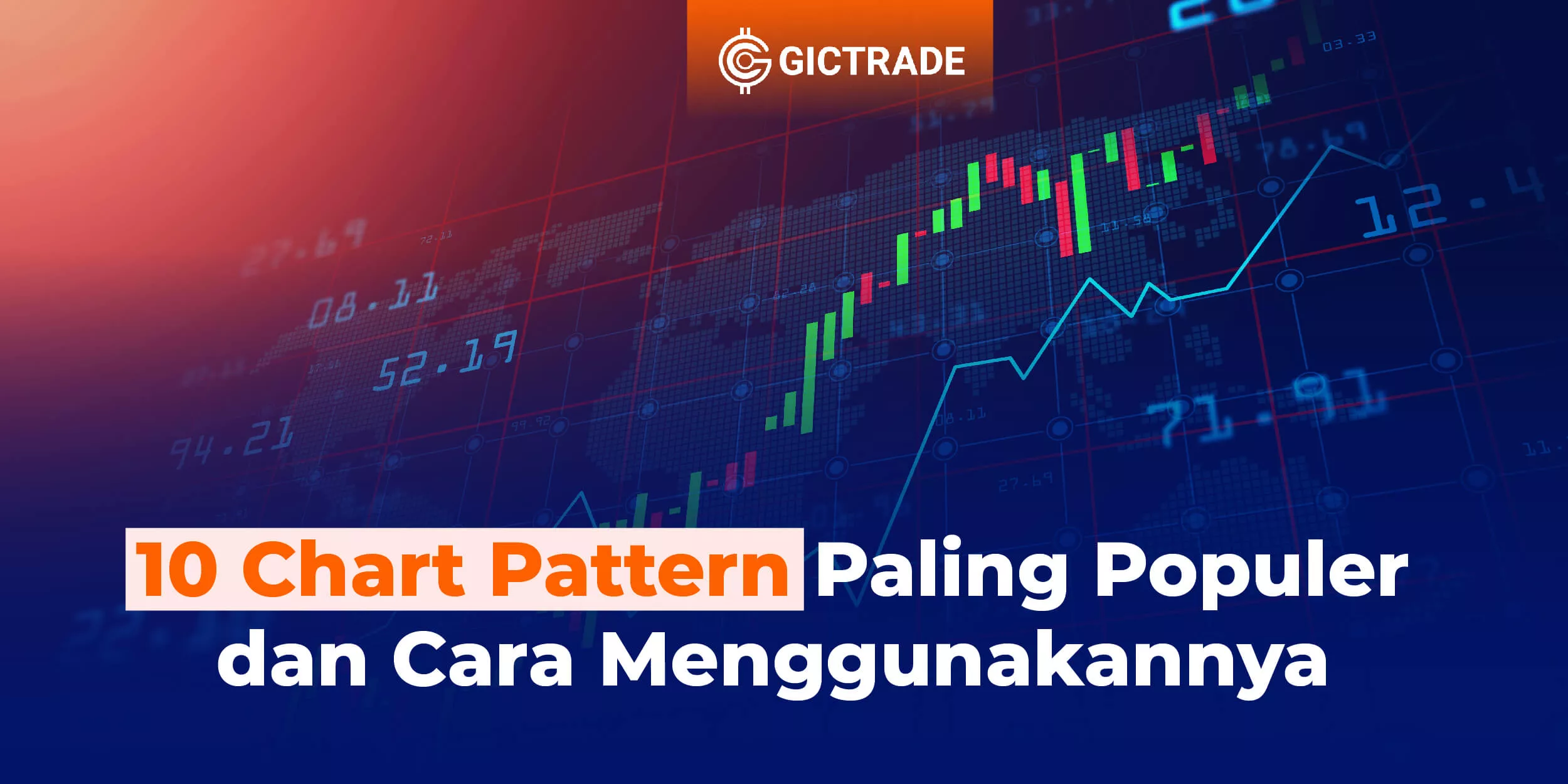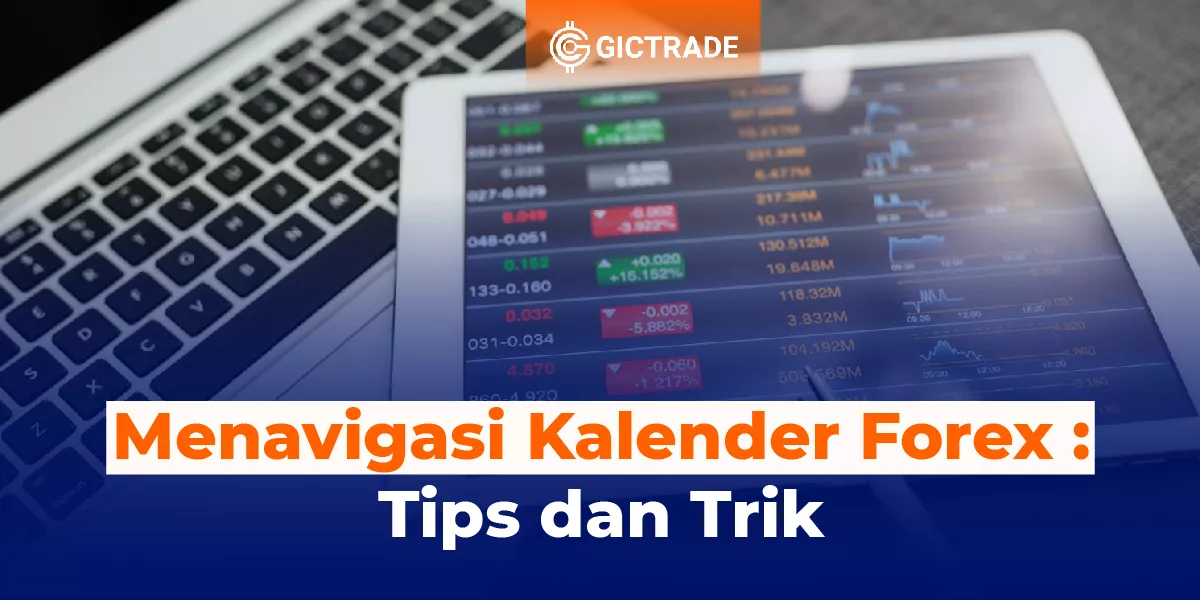Most Popular Chart Patterns - In the world of stock trading and financial markets, understanding chart patterns is key to identifying profitable trading opportunities. A chart pattern is a specific formation formed by the price of a stock or other asset on a chart. In this article, we will discuss the 10 most popular chart patterns used by traders and how to use them effectively. Let's get started!
Table of Contents
-0.webp)
1. Ascending Triangle Pattern
Ascending Triangle pattern is a pattern that indicates the possibility of a continuation of the uptrend. This pattern is formed when the horizontal resistance line meets the lower uptrend line. This indicates that buyers are getting stronger and can overcome pressure from sellers. To use it, we can place a buy order above the resistance line once the price breaks through it. Stop losses can be placed below the uptrend line to limit losses. The profit target can be determined by measuring the height of the pattern and multiplying it by the appropriate risk factor.
2. Descending Triangle Pattern
Descending Triangle pattern is the opposite of the Ascending Triangle pattern. This pattern indicates the possibility of a continuation of the downtrend. This pattern is formed when the horizontal support line meets the higher downtrend line. This indicates that sellers are getting stronger and can overcome pressure from buyers. To use it, we can place a sell order below the support line once the price breaks through it. Stop losses can be placed above the downtrend line to limit losses. The profit target can be determined by measuring the height of the pattern and multiplying it by the appropriate risk factor.
3. Head and Shoulders Pattern
Head and Shoulders pattern is a trend reversal pattern that is very popular among traders. This pattern consists of three peaks, with the middle peak (shoulder) lower than the previous peak (head). This pattern indicates that an uptrend has the potential to turn into a downtrend. To use it, we can place a sell order below the neckline (the line that connects the two necks) after the price breaks through it. Stop losses can be placed above the top of the head. The profit target can be determined by measuring the height of the pattern and multiplying it by the appropriate risk factor.
4. Double Top Pattern
Double Top pattern is a trend reversal pattern that forms after a strong uptrend. This pattern consists of two almost parallel peaks, separated by valleys. This pattern indicates that an uptrend has the potential to turn into a downtrend. To use it, we can place a sell order below the valley after the price breaks through it. Stop losses can be placed above the highest peak. The profit target can be determined by measuring the height of the pattern and multiplying it by the appropriate risk factor.
5. Double Bottom Pattern
Double Bottom pattern is the opposite of the Double Top pattern. This pattern is a trend reversal pattern that forms after a strong downtrend. This pattern consists of two almost parallel valleys, separated by peaks. This pattern indicates that a downtrend has the potential to turn into an uptrend. To use it, we can place a buy order above the peak after the price breaks through it. Stop losses can be placed below the lowest valley. The profit target can be determined by measuring the height of the pattern and multiplying it by the appropriate risk factor.
6. Symmetrical Triangle Pattern
Symmetrical Triangle pattern is a pattern that indicates a price consolidation before a breakout. This pattern is formed when the resistance line gets lower and the support line gets higher, creating a symmetrical triangle pattern. To use it, we can place a buy order above the resistance line after the price breaks it or a sell order below the support line after the price breaks through it. The stop loss can be placed opposite the side that is broken. The profit target can be determined by measuring the height of the pattern and multiplying it by the appropriate risk factor.
7. Pennant Pattern
Pennant Pattern is a pattern that indicates a price consolidation before a breakout. This pattern is often formed after a strong price movement and resembles the shape of a flag bound by two trend lines. The Pennant pattern consists of two main parts, namely the "flagpole" and the "flag". The flagpole part is formed by a significant price movement, either up or down, which is also called an impulse move. After the impulse move, the price starts to move in a narrower range and forms a flag pattern, which consists of two trendlines that are getting closer and closer to each other.
The Pennant pattern indicates a market consolidation, where traders are waiting for signals to take positions. This pattern also indicates the potential for trend continuation after the consolidation is completed.
Identifying Pennant Patterns
To identify the Pennant Pattern, we need to look at its main characteristics:
- Flagpole: The Pennant pattern begins with the formation of a flagpole, which is a significant price movement. Flagpoles can be either an uptrend or a strong downtrend and occur in a relatively short period of time.
- Flag: After the formation of the flagpole, the price starts to move in a narrower range and forms a flag pattern. This flag pattern consists of two trend lines that are getting closer to each other.
- Duration: Pennant patterns generally have a relatively short duration, ranging from a few days to a few weeks.
Using the Pennant Pattern in Trading
After identifying the Pennant Pattern, traders can use this pattern to take profitable positions. Some steps that can be taken are as follows:
- Waiting for a Breakout: In the Pennant Pattern, traders need to wait for the breakout that occurs after the consolidation. A breakout can occur when the price breaks through one of the two trend lines that form a flag pattern. A breakout is considered a signal that the consolidation is complete and the price is likely to continue the previous trend.
- Confirming the Breakout: It is important to confirm the breakout by looking at the increased trading volume. If the breakout occurs with high volume, it indicates that there is strong interest from the market to continue the trend. However, if a breakout occurs with low volume, it can signal a false signal or a weak price movement.
- Determining the Stop Loss and Profit Target: After taking a position, the trader needs to determine the appropriate stop loss level and profit target. Stop losses can be placed opposite the side broken by the breakout to protect the position from unwanted price movements. The profit target can be determined by measuring the height of the flag pattern and multiplying it by the appropriate risk factor.
Examples of Using the Pennant Pattern
For example, we observe a stock experiencing a strong uptrend and then forming a Pennant Pattern after a significant price movement. We can wait for a breakout that occurs when the price breaks through the upper trend line of the flag pattern with high volume. Once the breakout is confirmed, we can enter a long position with a stop loss placed below the lower trend line of the flag pattern. The profit target can be determined by measuring the height of the flag pattern and multiplying it by the appropriate risk factor. However, it is important to remember that not all Pennant Patterns will result in a successful breakout. There is a possibility of false signals or weak price movements. Therefore, the use of additional technical indicators and in-depth analysis can help increase the chances of success in using the Pennant Pattern in trading.
8. Cup and Handle Pattern
The Cup and Handle pattern is a trend reversal pattern that is often used by stock traders. This pattern consists of two parts, namely the "cup" and the "handle." The "cup" part indicates a price consolidation, while the "handle" part indicates a price correction before the breakout occurs. To use it, we can place a buy order above the resistance level after the price breaks through it. The stop loss can be placed below the valley low of the pattern. The profit target can be determined by measuring the height of the pattern and multiplying it by the appropriate risk factor.
9. Flag Pattern
The Flag pattern is a pattern that indicates a price consolidation after a strong price movement. This pattern is formed when the price moves in a narrow range and forms a pattern similar to a flag. To use it, we can place a buy order above the resistance level after the price breaks through it or a sell order below the support level after the price breaks through it. The stop loss can be placed opposite the side that is broken. The profit target can be determined by measuring the height of the pattern and multiplying it by the appropriate risk factor.
10. Wedge Pattern
The Wedge pattern is a pattern that indicates a price consolidation before a breakout. This pattern is formed when the resistance line and support line are close to each other and form a symmetrical triangle pattern or descending triangle pattern. To use it, we can place a buy order above the resistance line after the price breaks it or a sell order below the support line after the price breaks through it. The stop loss can be placed opposite the side that is broken. The profit target can be determined by measuring the height of the pattern and multiplying it by the appropriate risk factor.
Improve Your Trading Skills with the Most Popular Trading Platform in Indonesia, Join GICTrade Now!
Not familiar with GIC? Let's get acquainted. Unlike other conventional brokerage firms, GIC through the GICTrade platform provides a solution for traders who do not want to be charged with high trading fees. GICTrade is a peer-to-peer trading platform that brings together traders and market makers.
So, what is special about GICTrade? As a platform that brings together traders and market makers, you as a potential customer can certainly choose between the two, namely becoming a trader or a market maker.
GICTrade's role as a transaction venue provider can minimize costs and help maximize profits for traders and market makers as well as create a fair transaction atmosphere and results.
Traders will benefit from the absence of commission fees and low swap fees and spreads due to the presence of market makers as liquidity providers. You can also join the trader community on GICtrade's Telegram to ask fellow traders directly about their trading experience.
Also follow GIC's Instagram to get webinar information and various attractive prizes. In addition, on YouTube GIC, traders can also learn to trade for free! What are you waiting for? Get more features that fully support you to start investing and trading forex through GIC. Make transactions simpler, safer, and more profitable.
FAQs
What is a chart pattern?
A chart pattern is a specific formation formed by the price of a stock or other asset on the chart. This pattern can provide clues about the direction of future price movements.
Why are chart patterns important in stock trading?
Chart patterns are important in stock trading because they can help traders identify profitable trading opportunities. By understanding these patterns, traders can make better decisions in making stock transactions.
How do I identify a chart pattern?
To identify chart patterns, you need to pay attention to the price formations on the chart and see if any patterns are formed, such as triangle patterns, head and shoulders patterns, or double top patterns. You can also use technical tools such as indicators and trend lines to help recognize these patterns.
How to use chart patterns in stock trading?
To use it, you can place a buy or sell order according to the conditions that form after the price breaks through the relevant support or resistance level. You also need to set a stop loss and profit target to manage risk and potential profits.
What are the risks associated with using chart patterns?
The risk associated with using chart patterns is the possibility of a false signal or fakeout, where the price appears to break through a support or resistance level but then reverses direction. Moreover, there is no guarantee that the pattern formed will always end in an expected breakout or trend reversal.
Can chart patterns be used in all financial markets?
Yes, chart patterns can be used in all financial markets, including stocks, forex, commodities, and indices. The basic principles of identifying and using chart patterns remain the same, although it is necessary to pay attention to the specific characteristics of each of these markets.
| Also Read : When to Use Chart Patterns in Trading? Check it out |
Conclusion
Chart patterns are a very useful tool in technical analysis and can help traders to identify profitable trading opportunities. In this article, we have discussed the 10 most popular chart patterns and how to use them effectively. However, it is important to remember that there is no perfect method in stock trading, and risks are always present. By studying and understanding these patterns well, you can increase your chances of success in stock trading.
 Last:
Last: 







